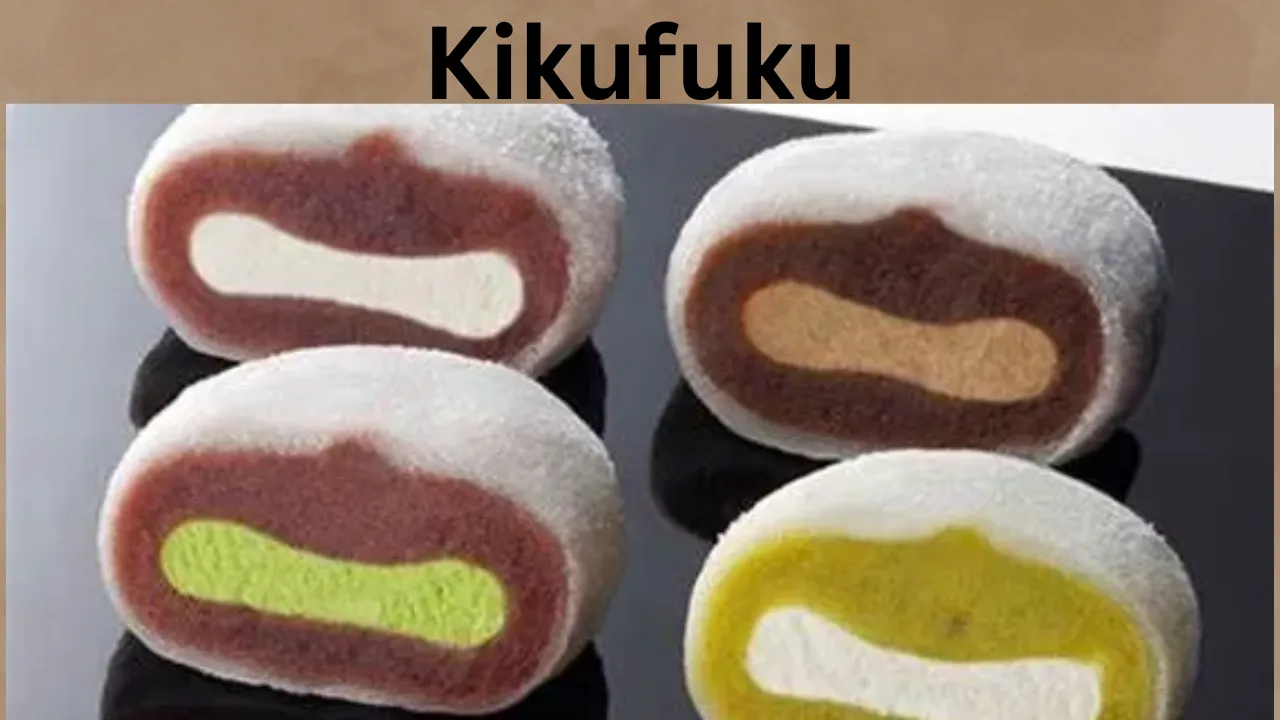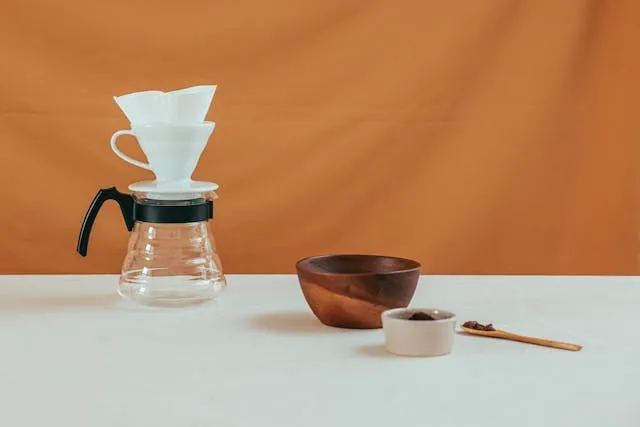Kikufuku: The Sweet Elegance of Japan’s Iconic Mochi Treat

When it comes to Japanese sweets, kikufuku is a name that resonates with fans of traditional and modern flavors alike. This unique treat, a specialty from Sendai, is more than just a dessert; it’s an experience of culinary craftsmanship. It has gained popularity for its harmonious blend of traditional mochi and creamy fillings, making it a must-try delicacy for locals and tourists.
What is Kikufuku?
Kikufuku is a type of mochi (rice cake) filled with various sweet and creamy fillings. Mochi, made from glutinous rice, is known for its soft and chewy texture. In it, this texture is complemented by luxurious fillings that offer a rich burst of flavor. Traditionally associated with Sendai and the Zunda Saryo chain, it has become synonymous with high-quality Japanese confections.
The fillings inside kikufuku are its true stars. Common flavors include:
- Zunda Cream: Made from sweetened edamame beans, this filling offers a smooth and nutty taste.
- Matcha Cream: This filling combines the earthy flavor of green tea with a rich, creamy texture.
- Red Bean (Anko) Cream: A blend of traditional red bean paste and light cream, adding a classic sweetness.
- Custard Cream: A Western-inspired flavor, offering a buttery and rich custard filling.
The variety of flavors makes this, a versatile treat that appeals to different palates, while its connection to Sendai enhances its cultural significance.
Why is Kikufuku So Popular?
The appeal of kikufuku lies in its delicate balance of flavors and textures. The soft and chewy mochi contrasts beautifully with the creamy fillings, creating a sensory delight. Unlike other sweets that can be overwhelmingly sugary, it offers a refined sweetness that allows its natural ingredients to shine.
Another reason for its popularity is its cultural authenticity. It represents the artistry of Japanese confectionery, combining time-honored traditions with innovative twists. For visitors to Japan, it’s an opportunity to taste something that feels uniquely tied to the country’s heritage.
Additionally, the variety of flavors means there is a it for everyone. Whether you prefer the earthy bitterness of matcha, the nutty sweetness of zunda, or the comforting richness of custard, there’s a flavor to suit your taste.
Flavors
Each flavor of it tells a story. The zunda cream is particularly significant, as it reflects the culinary identity of Sendai. Zunda, made from edamame beans, offers a slightly nutty and fresh taste, making it a standout choice.
For tea lovers, the matcha cream filling is a delightful option. Its slightly bitter and aromatic notes are perfectly balanced by the sweetness of the mochi, creating a harmonious experience.
The red bean (anko) cream pays homage to traditional Japanese sweets. By blending creamy textures with the earthy sweetness of red beans, this flavor delivers a taste of nostalgia.
Finally, the custard cream flavor introduces a touch of Western influence, showcasing how it has evolved to cater to modern tastes.
How to Enjoy Kikufuku
Kikufuku is best enjoyed fresh, as its delicate mochi and creamy fillings are at their peak flavor when freshly made. It is often served with a cup of green tea, which complements its sweetness and enhances its overall taste. For those purchasing it as a souvenir, refrigeration is essential to maintain its freshness.
Here is a quick guide on how kikufuku can be stored and consumed:
| Condition | Recommendation |
|---|---|
| Fresh Purchase | Consume within the same day for best taste. |
| Refrigerated Storage | Store up to 2-3 days; keep in a sealed box. |
| Enjoying with Beverages | Pair with green tea, matcha, or coffee. |
Where to Find Kikufuku
If you’re visiting Sendai, Zunda Saryo outlets are the best place to find authentic it. These stores often have a variety of flavors available, ensuring there’s something for every palate. Outside of Sendai, it can sometimes be found in specialty Japanese confectionery shops or at airports as a souvenir item.
For international fans, some Japanese grocery stores or online marketplaces may offer frozen it, allowing you to enjoy this delicacy at home. However, nothing compares to tasting fresh it from its place of origin.
Perfect Blend of Tradition and Modernity
Kikufuku is a shining example of how traditional Japanese sweets can evolve to embrace modern tastes without losing their cultural roots. At its core, it retains the essence of mochi, a centuries-old Japanese delicacy made from glutinous rice. Mochi has long been cherished in Japan for its chewy texture and simple, comforting flavors. It builds on this tradition by introducing creamy fillings that appeal to contemporary palates.
The inclusion of flavors like zunda cream, derived from edamame, ties it to the regional heritage of Sendai. Meanwhile, more modern flavors like custard cream and matcha cream demonstrate how it caters to diverse and global tastes. This marriage of tradition and modernity ensures that it resonates with both older generations, who appreciate its roots, and younger audiences, who enjoy its innovative twist.
Also Read: RedZoneGrosses.com: Everything You Need to Know About Movie Financial Data
Storage and Pairing Tips
To fully enjoy the delicate flavors and textures of it, proper storage and pairing are essential. It is best consumed fresh, as the softness of the mochi and the creaminess of the filling are at their peak shortly after preparation. However, it’s also possible to store it for short periods while maintaining its quality.
Storage Tips:
- Fresh Purchase: It should ideally be eaten the same day it is purchased. This ensures the mochi remains soft and the filling retains its creamy texture.
- Refrigerated Storage: If you must store it, keep it refrigerated in a sealed container to prevent it from drying out. It can usually stay fresh for up to 2-3 days. Let it come to room temperature before eating to enjoy the full flavor.
- Frozen Kikufuku: Some varieties of it are sold frozen, especially for international markets. Thaw them gently in the refrigerator before consuming.
Also Read: MyFavouritePlaces.org Your Guide to Unique Destinations
Pairing Tips:
Kikufuku pairs wonderfully with beverages that complement its sweetness and enhance its flavors:
- Green Tea: The slight bitterness of green tea balances the sweetness of it, creating a harmonious pairing.
- Matcha Latte: For a richer experience, try it with a creamy matcha latte, especially if you’re enjoying the matcha cream flavor.
- Coffee: A mild, unsweetened coffee pairs well with it’s custard cream or red bean flavors, providing a satisfying contrast.
- Herbal Teas: Light herbal teas, such as chamomile or jasmine, can complement the delicate zunda cream flavor.
By storing it correctly and choosing the right pairings, you can ensure that every bite delivers the perfect balance of taste and texture, just as intended by its makers.
Also Read: Abithelp .com Guide for Tech, Health, and Finance
Popularity in Modern Media
The anime series Jujutsu Kaisen has played a significant role in amplifying the global recognition of it. In the show, the immensely popular character Gojo Satoru openly expresses his love for the zunda cream flavor of it, making it a notable feature of his persona. This lighthearted detail not only adds charm to the character but also piqued the curiosity of fans worldwide, who began seeking out this unique treat for themselves.
This media exposure has effectively introduced it to a global audience. Transcending its origins in Sendai and capturing the attention of anime enthusiasts and food lovers alike. Many fans associate the dessert with Gojo’s charismatic personality, further enhancing its appeal. As a result, it’s popularity has surged, with international demand growing through online platforms and Japanese specialty stores. This cultural crossover demonstrates how traditional confections like it can find new life and appreciation in modern pop culture, connecting audiences across borders.
Also Read: Chizoba Wigwe: A Life of Vision, Strength, and Impact
Conclusion
Kikufuku is more than just a sweet treat; it is a symbol of Japanese culture, craftsmanship, and innovation. With its soft mochi exterior and luxurious creamy fillings, it has captivated the hearts of dessert lovers around the world. Whether you’re drawn to the nutty charm of zunda, the bold bitterness of matcha, or the comforting sweetness of custard, it offers an unforgettable experience.
If you’re ever in Japan, especially in Sendai, indulging in it is an absolute must. Its authentic flavors and delicate textures make it a standout among Japanese sweets, ensuring it will leave a lasting impression. In the world of confectionery, it is a shining example of how traditional recipes can evolve to cater to modern tastes while retaining their cultural essence. So, the next time you hear about it, remember it’s not just a dessert; it’s a story waiting to be savored.
Also Read: Methatreams Ultimate Guide to Free Sports Streaming






